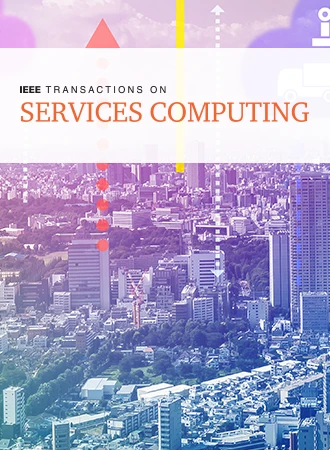一种以开发人员为中心的遗传算法,用于物联网应用在计算连续体中的放置
IF 5.8
2区 计算机科学
Q1 COMPUTER SCIENCE, INFORMATION SYSTEMS
引用次数: 0
摘要
物联网(IoT)范式的兴起使人们对将其应用于公众任务以及医疗保健等严格领域产生了兴趣。然而,这些下一代物联网应用程序的开发人员必须考虑与他们自动化流程的重要性相关的其他非功能性需求,例如低响应时间或低部署成本,以及技术限制,其中包括组织,法律和政策相关的限制,这些限制与数据可以处理或存储在哪里有关。虽然Computing Continuum范式作为放置此类应用程序的有价值的替代方案出现,但确定满足所有这些需求的部署成为一项艰巨的挑战。该问题的NP-hard性质使得手动找到这样的部署是不切实际的,并且传统方法无法考虑技术限制。在本文中,我们介绍了应用程序放置的遗传算法(GAAP),这是一种基于进化计算的元启发式算法,旨在帮助物联网应用程序开发人员找到满足其服务质量、业务和技术限制的部署。我们对医疗物联网用例的评估表明,GAAP比传统方法支持更大的场景,并为物联网应用程序开发人员提供更多选择,同时提供更好的可扩展性。本文章由计算机程序翻译,如有差异,请以英文原文为准。
A Developer-Focused Genetic Algorithm for IoT Application Placement in the Computing Continuum
The rise of the Internet of Things (IoT) paradigm has led to an interest in applying it not only in tasks for the general public but also to stringent domains such as healthcare. However, the developers of these next-generation IoT applications must consider additional non-functional requirements related to the criticality of the processes they automate, such as low response times or low deployment costs, as well as technical constraints, which include organizational, legal and policy-related constraints on where data can be processed or stored. While the Computing Continuum paradigm emerges as a valuable alternative for placing such applications, identifying the deployments that satisfy all these requirements becomes a tough challenge. The NP-hard nature of the problem makes it impractical to manually find such a deployment, and traditional approaches fail to consider the technical constraints. In this article, we present the Genetic Algorithm for Application Placement (GAAP), an evolutionary computing-based meta-heuristic designed to help IoT application developers find deployments that satisfy their Quality of Service, business and technical constraints. Our evaluation of an Internet of Medical Things use case shows that GAAP supports larger scenarios than traditional approaches and gives IoT application developers more options while providing better scalability.
求助全文
通过发布文献求助,成功后即可免费获取论文全文。
去求助
来源期刊

IEEE Transactions on Services Computing
COMPUTER SCIENCE, INFORMATION SYSTEMS-COMPUTER SCIENCE, SOFTWARE ENGINEERING
CiteScore
11.50
自引率
6.20%
发文量
278
审稿时长
>12 weeks
期刊介绍:
IEEE Transactions on Services Computing encompasses the computing and software aspects of the science and technology of services innovation research and development. It places emphasis on algorithmic, mathematical, statistical, and computational methods central to services computing. Topics covered include Service Oriented Architecture, Web Services, Business Process Integration, Solution Performance Management, and Services Operations and Management. The transactions address mathematical foundations, security, privacy, agreement, contract, discovery, negotiation, collaboration, and quality of service for web services. It also covers areas like composite web service creation, business and scientific applications, standards, utility models, business process modeling, integration, collaboration, and more in the realm of Services Computing.
 求助内容:
求助内容: 应助结果提醒方式:
应助结果提醒方式:


